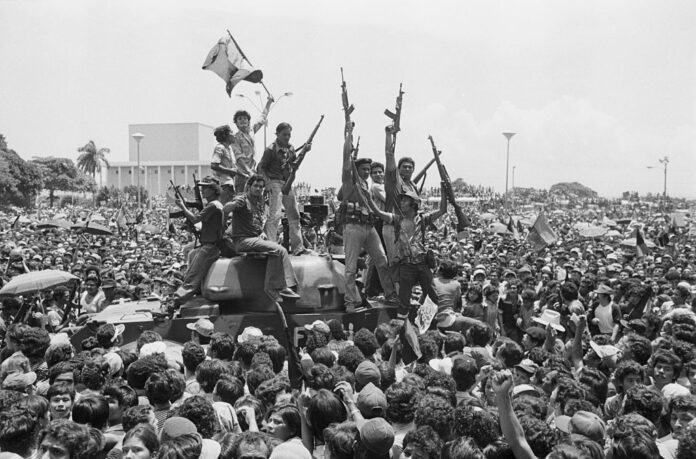Who were the Sandinista?
19 July is celebrated in Nicaragua as Nicaraguan Revolution day and commemorates the anniversary of the Sandinista uprising, ending the brutal Samoza dictatorship. Sandinista are followers of the legacy of Augusto Sandino and his struggle against dictatorship and American imperialism.
Augusto Sandino
To secure its economic interests in the Western Hemisphere, the United States of America pursued several military interventions across the Caribbean and Central America throughout the nineteenth century.
At the beginning of the twentieth century, the US planned to dig a canal through Central America to ease trade between the east and west coasts of the American continents. This was inspired by the success of the Suez Canal in Egypt.
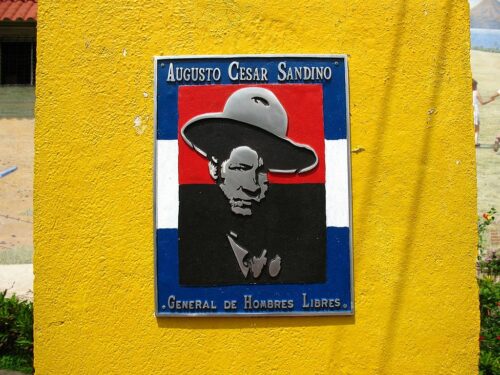
At first, it looked like the canal would go through Nicaragua. After supporting a Panama separatist movement in Colombia, the US gained a footing in Panama and left its operations in Nicaragua.
American forces remained in Nicaragua for fears that other imperial powers would try to get in the region. The Americans supported the conservative crony rule of Porfirio Diaz.
As a child, Augusto Sandino saw the brutality of the American Marines against those who opposed Diaz. His mother was the servant of a wealthy Spanish landlord. The landlord, his father, never acknowledged him. After being abandoned by his mother as a child, his father supported him economically.
When he was 26, a man from an influential family publically humiliated him by insulting his mother. In response, he shot the man and fled the country. He traveled across Central America and ended up working for the Standard Oil Company in Mexico.
Fighting in Mexico
Like many Mexican migrant workers, Sandino became involved in radical trade unionism, which sought to liberate workers through control of the factory. Here he came across anti-imperialist anarchists, which would form his basic ideology. Even later when he began to lead his movement back home, he used the black and red colors for his flag, anarchist colors.
The Mexican revolution tried to overthrow the corrupt and authoritarian rule of Porfirio Diaz. Mexico, like Nicaragua, was geographically economically and ethnically diverse, with many movements developing solidarity with each other from different parts of the country.
Also read: Latin America: Protesting Legal Loot and Corrupt Capitalism in Guatemala
They included anarchist, peasant, and indigenous movements. These movements were anti-imperialist, anti-capitalist, and anti-racist. In Mexico, alliances were formed between indigenous revolutionaries and agrarian socialists.
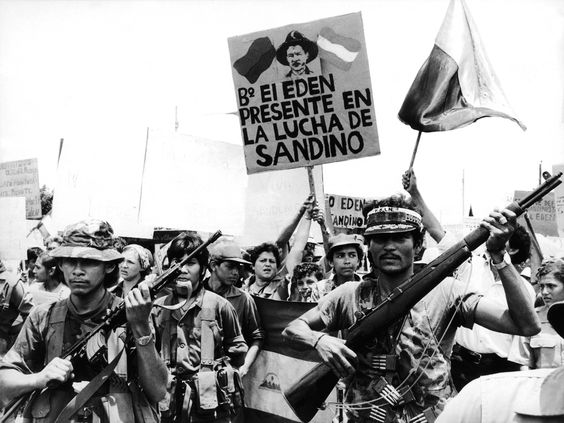
Sandino developed an understanding of how these revolutionary movements could complement each other and work practically. This included building solidarity and emphasis on the cultural aspects of the revolution.
Back to Nicaragua
In 1926, he returned to Nicaragua to organize a movement against American occupation. The American presence was still strong, so he used guerilla tactics. Taking advantage of the highly forested jungles of Nicaragua, he used small forces to do high damage against the Americans. Sandino also organized night-time attacks to attack areas further from the jungle.
The American press called him a bandit. Things changed in 1929 with the Great Depression hitting the American economy. The Great Depression hit Nicaragua as well. It strengthened resistance and weakened the resolve of the Americans to remain. Sandino continued the struggle.
The Assasination of Sandino
After the American withdrawal, Nicaragua had elections. Sandino was suspicious of the Nicaraguan National Guard, whom he said was still close to American forces. He insisted that they be disbanded. He was unpopular with the National Guard. Some of its members eventually assassinated Sadino in 1934 after a meeting with the new President, Juan Bautista Sacasa when Sandino was kidnapped. His body was never found.
General Somoza Garcia of the National Guard, then took over Nicaragua. He and his sons ruled the country for over forty years until the Sandino insurrection in 1979.
After Sandino
Various groups fought against the dictatorship. On 19 July 1960, a group of dissidents opposing the dictatorship, inspired by the Algerian National Liberation Front, formed the FLN (National Liberation Front). Two years later, they changed their name to the FSLN (National Sandinista Liberation Front).
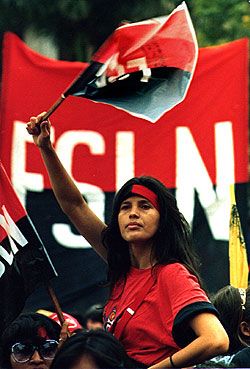
The FSLN worked with students, peasants, and other anti-Somza groups and continued growing all throughout the 60s.
Fall of the Somozas
American support for the Somoza family began to wane. Stories of extra-judicial killings and torture by the Somoza government came to light in the 1970s. The American government faced difficulties maintaining its image as a saviour of democracy while supporting a dictator so closely. At the same time, it was afraid of a left-wing government coming to power.
A coalition of liberal and conservative parties opposed to the Somoza family was founded. On 10 January 1974, the founder of the coalition, newspaper editor Pedro Joaquin Chamorro Cardenal was killed by members of Somoza’s administration, and riots broke out in the country.
Rise of FSLN
On 23 January 1974, the FSLN called for a general strike and was very successful. Reports say that nearly 80% of businesses were shut down.
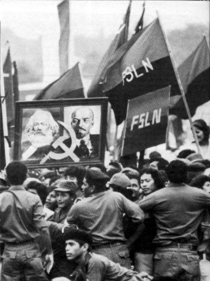
Image: Nicaraguan Sandinistas Website
The FSLN became more popular than ever, using kidnapping and guerilla methods to control more parts of the country. By 17 July 1979, President Somoza fled to the United States leaving the FSLN to take over the country.
When they had power, the FSLN enacted grassroots democratic reforms. They instituted land reforms and literacy programs. They did not conduct national elections, though they held local elections and tried to build community-based support systems.
The Americans, fearing another left-wing government in the American Continent began to fund violent counter-movements, called Contras.
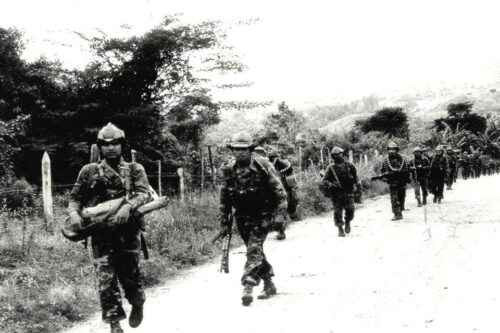
Nicaragua was plunged into a Civil war, and the Sandinistas declared an emergency, following which many human rights were suspended. Constant fighting also led to a centralization of leadership.
The fighting continued until 1990 when a ceasefire agreement led to the establishment of national elections. The US had threatened to punish Nicaragua economically if not militarily in case the FLSN came to power. The FLSN lost the elections and served as an opposition party member until 2008 when they won the election and have been in power since.
The current FLSN has lost much of its original revolutionary spirit, is highly centralized, and has been implementing neoliberal policies. The old grassroots programs have not gotten a second life since the FLSN has come to power.
The legacy of Augusto Sandino and the Sandinista uprising of 1979 took down powerful dictatorships, powered by the United States. Even today, a strong revolutionary force in Nicaragua would face a brutal response from the United States. The Sandinista uprising was a period of hope for the Nicaraguans, one that the current period does not have.
Also read: Bolivia: Another US-backed military coup in Latin America


